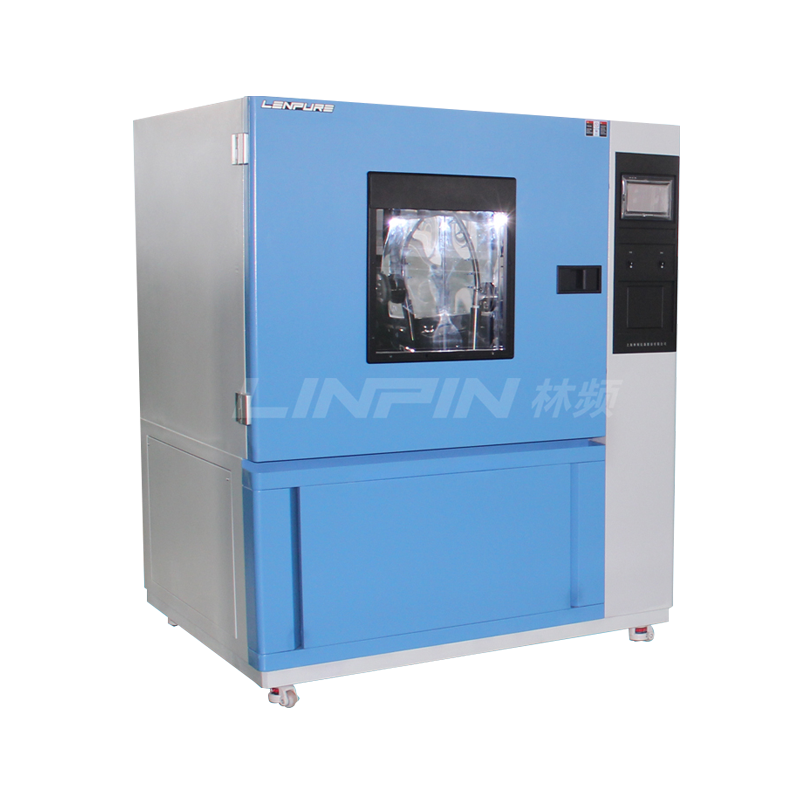

When anomalies occur during operation, on-site personnel are advised to follow the four-step troubleshooting method “Symptom – Cause – Action – Verification.” Typical faults and their countermeasures are presented below for quick reference.
Nozzle Flow Deficiency
Symptom: The flow-meter reading is below the set point, or the spray pattern appears incomplete.
Cause: Nozzle orifice blocked by scale or debris; circulating-pump impeller worn, resulting in reduced head.

Action:
• Shut down the equipment and remove the nozzle.
• Gently scrub with a soft brush dipped in a 5 % citric acid solution, then rinse with de-ionized water.
• If flow is still unsatisfactory, inspect the impeller; replace if wear exceeds 1 mm.
Verification: Reinstall the nozzle, run the chamber empty for three minutes, and confirm that the flow-meter reading returns to within ±2 % of the nominal value.
Oscillating Tube Angle Drift
Symptom: Programmed to 180°, the tube reverses at 175°, or the end position drifts day by day.
Cause: Encoder coupling loose; servo motor intermittent step loss; mechanical limit screw inadvertently displaced.
Action:
• Power off and manually rotate the ball screw to check for binding.
• Tighten encoder coupling screws to 1.2 N·m.
• Enter the servo-drive parameter menu, reset the mechanical origin, and save to EEPROM.
Verification: Run ten empty cycles continuously; the angular error must be ≤ ±0.5°.
Turntable Fails to Rotate
Symptom: After pressing Start, the turntable remains stationary and the VFD displays “OL” overload alarm.
Cause: Chain tension insufficient leading to tooth jump; reducer bearing lubrication failure.
Action:
• Reset the VFD and manually rotate the table to feel for excess drag.
• Adjust chain sag to 2 %–3 % of center distance and apply high-temperature lithium grease.
• If reducer temperature exceeds 55 °C, drain and refill with VG220 gear oil.
Verification: After three minutes no-load run, load the rated test specimen and ensure the motor current stabilizes between 90 % and 105 % of the rated value.
Water Ingress into Electrical Cabinet
Symptom: Standing water on cabinet floor, PLC reports “module fault,” rust spots on metal parts.
Cause: Door seal aged and lost elasticity; negative pressure draws in condensate.
Action:
• Switch off power immediately, remove affected modules, wipe with anhydrous ethanol, and dry at 50 °C for two hours.
• Replace the foamed-silicone door seal with 25 %–30 % compression.
• Install an IP55 breather valve on the cabinet roof to balance internal and external pressure.
Verification: After a 24-hour high-humidity test at 85 % RH, no condensation should appear inside the cabinet.
Poor Test Repeatability
Symptom: Identical specimens yield inconsistent waterproof ratings across three runs.
Cause: Elevated conductivity of circulating water, temperature fluctuation, or uncontrolled ambient humidity.
Action:
• Drain the system and refill with fresh de-ionized water having conductivity ≤ 5 µS/cm.
• Calibrate the thermostatic jacket to 20 °C ± 1 °C.
• Start laboratory HVAC 30 minutes prior to testing to maintain 23 °C ± 2 °C and 50 % RH ± 5 % RH.
Verification: Conduct five comparison tests on a reference specimen; the result deviation must not exceed half a waterproof rating level.
If the above measures do not restore normal operation, stop the machine immediately, complete the Fault Record Sheet, and contact the manufacturer’s 400 hotline or an authorized service provider to prevent secondary damage from continued operation.